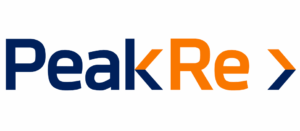

In the dynamic landscape of emerging markets, the middle class stands as a pivotal force driving economic growth and societal change. This is particularly true for emerging Asia, the world’s most dynamic and vibrant economic powerhouse. Over the last ten years, emerging Asia chalked up an impressive real GDP growth by 5.6% per annum, faster than advanced economies and any other emerging region.[1]
Strong economic growth and an expanding middle class go hand in hand. In 2020, an estimated 2 billion Asians were part of the middle class, projected to increase to 3.5 billion by 2030 and account for 65% of the global total.[2] This burgeoning segment has played a vital role in driving domestic consumption and economic growth. Middle-class consumers are exemplified by their increasing purchasing power, aspirations for a better quality of life, and a growing demand for diverse financial products and services. As income increases, these consumers are able and willing to spend on things like better housing, long-haul travel and quality education for their children.
The coming into the age of emerging Asia’s middle class is not just reshaping the region’s economic landscape but will also have significant implications for the future of insurance. With increasing asset ownership, there will be expanding demand for different types of insurance products, from insurance against property damage to protection against large medical expenses or the loss of household breadwinners.
Old-age care: preparing for thefuture
One of the challenges facing many middle-class households in the region is ageing. Population ageing in Asia is happening at an unprecedented rate due to factors including falling fertility rates, changing societal norms, medical improvements, and rising life expectancy. It is estimated that the percentage of Asian population aged 65 or over would double in 20-25 years, while it took more than 50 years for that to happen in most European markets.[3] Notably, fast population ageing is affecting not only those more developed economies in the region but also emerging markets like China, Thailand and Vietnam.
As many emerging Asian markets will fast transit from an “ageing” to an “aged” society, preparing adequately for old-age retirement is a pressing challenge. Research has demonstrated that existing pension schemes are either insufficient or only partially funded.[4] In addition, not many markets have fully considered the additional financial requirements arising from the need for old-age care. Indeed, governments’ ability to fund additional old age-related social security services is limited. Public sector fiscal flexibility has shrunk significantly in recent years, partly due to pandemic-related excess spending. The debt-to-GDP ratio has increased, in some cases, to alarming levels.
Middle-class households are increasingly shouldering the financing burden of old-age care, for themselves as well as that of their parents and parents-in-law. The availability of old-age care insurance solutions is limited so far. Long-term care insurance is limited chiefly to state-sponsored ones and available only in developed Asian markets like Japan and South Korea. Furthermore, traditional long-term care insurance, which focuses on financing institutional care at the terminal stage, is not cost-efficient nor popular with Asian consumers.
“The coming into the age of emerging Asia’s middle class is not just reshaping the region’s economic landscape but will also have significant implications for the future of insurance. With increasing asset ownership, there will be expanding demand for different types of insurance products, from insurance against property damage to protection against large medical expenses or the loss of household breadwinners.”
Shifting disease patterns alongside changing lifestyles and ageing, coupled with the rise in the cost of care and pressure on public coffers, is giving rise to New Care Models.[5] These models emphasise disease prevention and health promotion, proactive management of chronic diseases, coordinated care delivery covering physical and mental well-being of the elderly, and often utilising community- or home-based services. Under the New Care Models, families play an important role in supporting the delivery of old-age care.
Women in the workforce: a rising consumer segment
Indeed, families often rely on their female members to care for the elderly. This has a long tradition in many markets but is facing increasing challenges. With shrinking family sizes, more women have joined the labour force in recent decades, thus increasing the opportunity cost of forfeiting a career to become a family caregiver.
Indeed, women’s increasing financial clout has given rise to expectations of them playing an increasingly important role in driving consumer demand, as more women have control over their finances. According to McKinsey, women’s empowerment could add 30% to Asia’s consumption growth, and insurance and other financial services will be among the major beneficiaries.[6]
It can be expected that the more active economic roles of women will also bolster their influence on household financial decisions. Increasingly, insurers have developed tailored insurance products for different women segments.[7] Most popular are health insurance products that offer coverage for illnesses that are more prevalent among women. Some of those are also coming with maternity benefits and wellness programs. At the same time, insurers have designed products for women entrepreneurs that not only just offer insurance protection (against business interruption or property damage) but also provide support services like business coaching.
These women contribute significantly to household incomes and actively engage in financial planning and investment. The insurance sector must recognise and cater to the unique needs of these women, offering products that support their roles and financial aspirations.
Enabling emerging Asia middle class
These are some of the key trends that will shape the future of insurance in Asia. Yet, meeting the needs of middle-class consumers requires a more detailed understanding of their profile, preferences and risk attitude. At the same time, there could be significant differences across different emerging Asia markets. What are middle class’ expectations of governments to support elderly care? What are the care services they will need when they get old? Are there major differences in terms of financial literacy between working mothers and independent women?
It is estimated that the percentage of Asian population aged 65 or over would double in 20-25 years, while it took more than 50 years for that to happen in most European markets. Notably, fast population ageing is affecting not only those more developed economies in the region but also emerging markets like China, Thailand and Vietnam.
Since 2022, Peak Re has conducted extensive annual consumer surveys to better gauge the risk preferences and behaviours of the emerging market middle class. The aim is to help close the protection gap emerging Asia’s burgeoning middle class faces. The 2024 survey edition will focus on the need for old-age care and the rise of women’s consumer sectors. These will be instrumental in informing insurers on how to better devise products, engage with them, and meet their service expectations.
Conclusion
The insights from our consumer survey underscore the urgency for the insurance sector to adapt and innovate. Middle-class consumers in emerging markets navigate a complex landscape of financial responsibilities, health concerns, and family dynamics. Insurance companies can develop products that are comprehensive, affordable, and easy to understand and access.
As we prepare to announce the detailed findings of our large-scale consumer survey in September 2024, it is clear that the middle class in emerging markets represents a significant opportunity for the insurance sector. By understanding the unique needs and challenges these consumers face, insurance companies can develop targeted solutions that address their concerns and aspirations.
[1] IMF World Economic Database, April 2024.
[2] The rise of Asia’s middle class | World Economic Forum (weforum.org)
[3] Population Ageing | Demographic Changes (population-trends-asiapacific.org)
[4] Bridging-asias-pension-gap-july-2019_final.pdf (eastspring.com)
[5] New Care Models: How insurers can rise to the challenge of older and sicker societies (genevaassociation.org)
[6] Beyond income: Redrawing Asia’s consumer map | McKinsey
[7] Innovative Financial Products and Services for Women in Asia and the Pacific (adb.org)
Authors:
 |
Franz-Josef Hahn
CEO, Peak Re |
 |
Clarence Wong
Chief Economist, Peak Re |
-
QBE | Elevating customer experience, humanising claims: QBE Asia’s ‘Solutions in a Box’
Vastly improving turnaround times and personalising service delivery, QBE Asia’s award-winning, end-to-end bundled claims solutions is a game-changer for the insurance industry.
-
Beazley | What does cyber protection look like from day 1 to day 600 and beyond?
Cybersecurity is no longer just an IT concern, but a governance issue that belongs on the boardroom agenda.
-
Sedgwick | Preparing for the next storm
Insurance industry needs to recalibrate, invest in innovation and strengthen systems, talent and data practices.
-
Peak Re | From climate modelling to market opportunity: Forging a new clarity on Southeast Asia’s climate risk
Southeast Asia's protection gap: a crisis of clarity, not just capital
